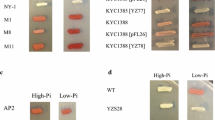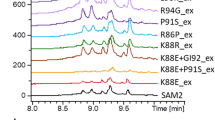Abstract
The original pso3-1 mutant isolate of the yeast Saccharomyces cerevisiae exhibits a pleiotropic mutagen-sensitivity phenotype that includes sensitivity to UVA-activated 3-carbethoxypsoralen, to UVC-light, to mono- and bi-functional nitrogen mustard, to paraquat, and to cadmium; on the other hand, it shows hyper-resistance (HYR) to nitrosoguanidine when compared to established wild-type strains. Also, the original pso3-1 mutant exhibits a low UVC-induced mutability and mitotic gene conversion and a high rate of spontaneous and UVC-induced petite mutations. Since the HYR to the nitrosoguanidine (MNNG) phenotype resembles that of low glutathione-containing yeast cells, the original pso3-1 mutant was crossed to a gsh1 knock-out mutant that lacks the enzyme for the first step in glutathione biosynthesis and the resulting diploid was tested for complementation. While there was none for HYR to nitrosoguanidine, and other low glutathione-related phenotypes, some other phenotypic characteristics of pso3-1, e.g. UVC sensitivity and UVC-induced mutability were restored to a wild-type level. Tetrad analysis of a diploid derived from a cross of the original haploid pso3-1 isolate with a repair-proficient, normal glutathione-containing, PSO3 GSH1 wild-type led to the separation of a leaky gsh1 mutation phenotype from that of the repair-deficient pso3-1 phenotype. Linkage studies by tetrad and random spore analyses indicated no linkage of the two genes. This shows that the low glutathione content in the original pso3-1 isolate is due to a second, additional, mutation in the GSH1 locus and is unrelated to the pso3-1 mutation. Thus, the original pso3-1 isolate is a pso3-1 gsh1 double mutant with most of the particular characteristics of the pleiotropic sensitivity phenotype contributed by either the pso3-1 or the gsh1-leaky mutant allele. The expression of a few phenotypic characteristics of pso3, however, were most pronounced in pso3-1 mutants with a low glutathione pool.
Similar content being viewed by others

Author information
Authors and Affiliations
Additional information
Received: 16 August / 24 September 1997
Rights and permissions
About this article
Cite this article
Brendel, M., Grey, M., Maris, A. et al. Low glutathione pools in the original pso3 mutant of Saccharomyces cerevisiae are responsible for its pleiotropic sensitivity phenotype. Curr Genet 33, 4–9 (1998). https://doi.org/10.1007/s002940050301
Issue Date:
DOI: https://doi.org/10.1007/s002940050301



